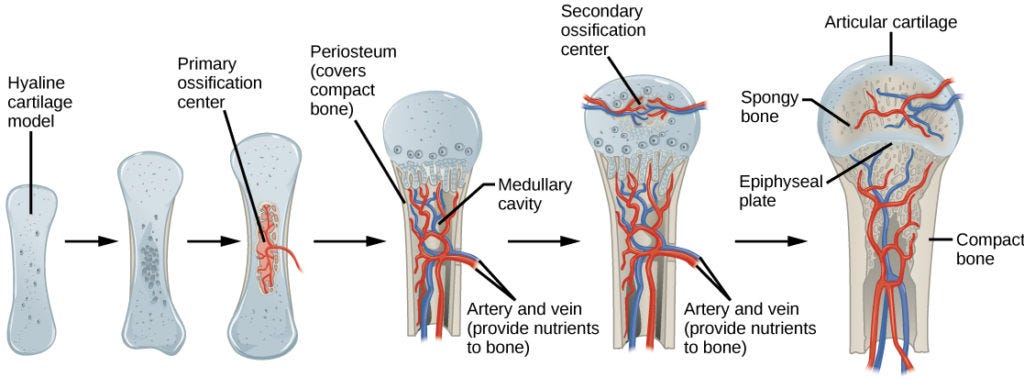Intramembranous Ossification
Written by Shrishti Harish
The skeletal system's purpose is to provide a structural framework for the body. Along with this, it protects internal organs and stores minerals like calcium. One of the skeletal system's most important functions is producing blood cells. Within the bone marrow, blood cells are synthesized.
However, bones form through this amazing process called ossification. To put it simply, ossification is the development of bone. There are two types: Intramembranous Ossification and Endochondral Ossification. Intramembranous Ossification is the replacement of a mesenchymal skeleton with bone. The mesenchymal “skeleton” is just embryonic connective tissue and bone formation starts to form during the 6th week of embryonic development.
The third step of IO is the development of trabeculae. Spongy bone is developed and red bone marrow forms and produces red blood cells. The final step is the development of the Periosteum. The periosteum is the connective tissue that covers the outer surface of bone. Along with this, a layer of osteoclast cells is in between the actual bone and periosteum.
References
https://www.kenhub.com/en/library/anatomy/bone-tissue-formation
https://open.oregonstate.education/aandp/chapter/6-4-bone-formation-and-development/
Written by Shrishti Harish from MEDILIQUY


